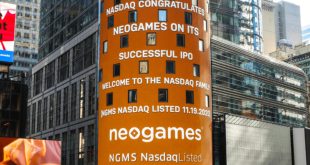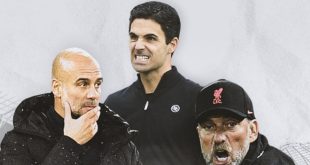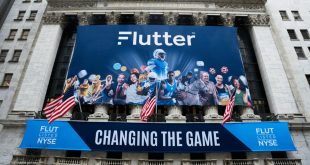Eilers and Krejcik Research has unveiled its latest analysis of the daily fantasy sports industry with an update for 2017 which opens with the line ‘by all accounts 2016 was a challenging year for the DFS industry with some silver linings’.

These are silver linings worth looking into. First though, a look back at some of the issues the industry endured in the past 12 months. Over in the States the legal crackdown saw New York closed for much of the year, this hit DFS hard as NY was the second largest state in terms of revenues and entry fees.
A number of second and third tier operators closed for good and even the likes of DraftKings and FanDuel had to thoroughly tighten the purse strings. Despite its relatively small size the end of college DFS was another thorn in the side of operators too.
Despite all this Eilers estimates that the industry managed to grow +4% year on year in 2016 to $3.26bn (£2.65bn). This is an impressive feat with the volume and ferocity of the challenges the industry faced. Another estimation is that from a net revenue perspective (entry fees less prizes) the industry grew 15% year on year to $350m (£285m).
The future is bright with eight states, including New York, passing official legislation in the US to regulate such contests. The report also notes that most of these recognised real money fantasy contests as a different entity to gambling or online poker. The support of professional sports leagues, such as the NBA, was vital in seeing this legislative treatment come through and the paper states that they ‘see no reason why this should wane in 2017’.
So whilst DraftKings and FanDuel spent the year consolidating, discussing a merger, cutting marketing costs and fighting court battles, what were the second and third tier operators up to? As mentioned previously some in the US closed down; iTEAM Network and DraftOps ceased operations, Fantasy Feud was acquired by Fantasy Acres and StarsDraft is as good as closed.
Over in Europe the likes of Mondogoal and Oulala, both of whom have signed impressive partnerships, switched to strictly B2B operations. This brings about the question of whether, in Europe at least, a standalone B2C daily fantasy operator is a viable business model? Many are looking at integration opportunities with bookmakers; Mondogoal already have white label partnerships with SISAL and Lottomatica. Oulala meanwhile received £1.1m in funding recently and looks set to have a busy year.
Two relative newcomers to the scene have potential in Sportito (a venture by ASAP Italia and Sportradar) and Premier Punt. DraftKings, FanDuel and Yahoo all have a UKGC licence but we’re yet to see any major marketing campaigns over here from the ‘big three’ quite yet. Clearly the industry believes there is opportunity in the UK and Europe, but it seems most are still trying to figure out how best to approach it.
So, what to do next? Both FanDuel and DraftKings are experimenting with various ad-based models (e.g.. sponsored tournaments), which, while still small, have shown promising growth. A greater focus on social features is another element which operators must work on; that is encouraging friend leagues and tournaments which’ll lead to more casual players getting involved.
Predictions for 2017
Eilers’ forecast for 2017 is, on the whole, positive. It assesses that DraftKings and FanDuel will continue to ride the wave of positive legislative momentum and that the ‘worst is over’ for both companies in their legal battles.This momentum could be scuppered or held up with such a vast change in state attorney generals post-election but the assumption (or perhaps hope) is that this won’t cause too much of a challenge.
With the merger in place, which isn’t expected to be fully close until the second half of 2017, DraftKings and FanDuel will both become the stronger for it. What form this merger will take remains unclear and Eilers believes that the optimum decision would be ‘Two brands, Mostly Shared platform’. This is as opposed to potential other versions such as two brands but one identikit platform, two brands and unique platforms or one platform, one brand. This will ensure that each can maintain distinct identities, provide flexibility with bonusing and promotions and give the operators maximum room to experiment with new game iterations and features.
The benefits of the merger will mean lower costs, a stronger relation with partners and better ability to sign new ones, whilst the lack of a major competitor should mean they can better concentrate on executing a long term vision. There are cons of course; Eilers believes that there will be a definite reduction in liquidity whilst the potential wranglings, culture clash and power struggle of two major companies and boardrooms coming together may lead to issues.
A final assessment on the outlook for DFS by Eilers and Krejcik is that ‘the seeds will be planted for the next wave of fantasy contest products’. This merger should reignite investor interest in alternative fantasy products, a financially strong merged DK/FD could mean they begin to acquire upstart products and technologies which’ll lead to this area being stimulated.
More operators could emerge too thanks to a mostly cleared regulatory landscape, the exodus of DraftKings and FanDuel staff, and those from shuttered smaller operators, coupled with a surplus of high end platforms available for purchase lowering the cost of entry should entice those currently on the fence. Consolidation will continue to be a factor and the second tier operators that survived 2016 may be forced to either sell up, which could set the stage for casino stakeholders for example to enter, or we could see some second and third tier mergers.
To close, the report offers three scenario predictions; one best case, one base case and one worst. In the best case scenario the industry (by 2018) will be valued at $5.3bn (£4.31bn), whilst the middle of the road scenario has it at close to $4bn (£3.25bn) and the worst case it drops slightly to $2.9bn (£2.32bn). The best case assumes that DFS operators are able to operate freely in the top ten US states, that the merger is successful with minimal impact to liquidity and player experience, and that new social features help drive casual player adoption.
The worst case meanwhile assumes adverse DFS regulation in one or more key states, attrition amongst high volume players and little to no impact from social features and new ad-based revenue models. Regardless of which of these scenarios play out, if any, the thinking is that the DFS industry at large has survived the eye of the storm.
Now it needs to pick up the pieces and rebuild but remember that the storm itself has yet to pass in full.








